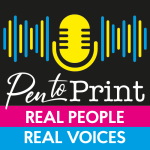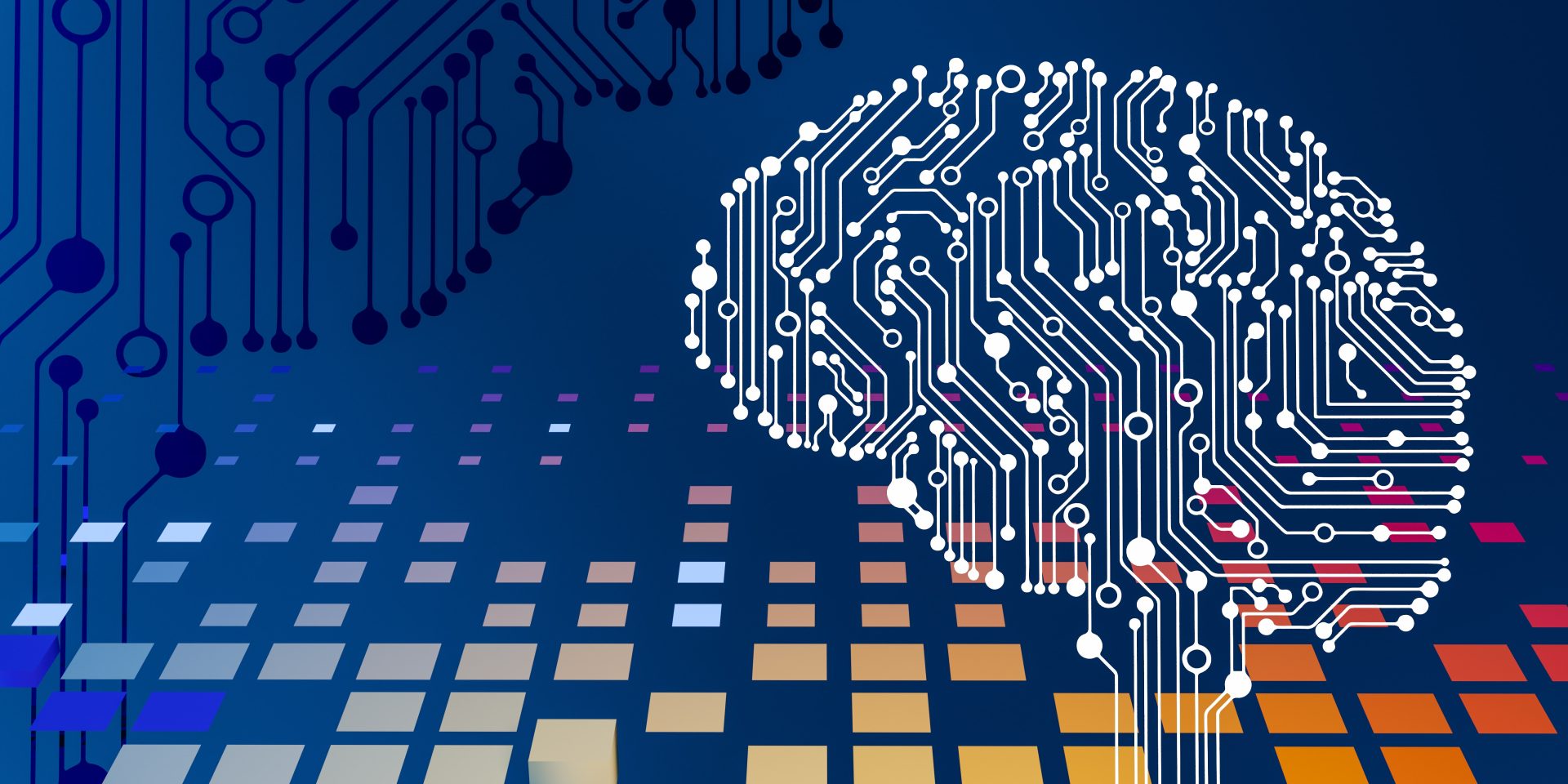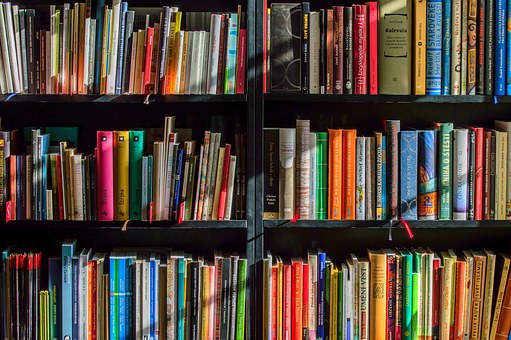Monday Moments: Man Vs. Machine
Introduced By Amber Hall

This month marks the start of our new theme, ‘Reality And Perspectives’. For my page this month, I wanted to explore digital realities and the relationship between AI and creatives.
A few months ago, I started working for an AI company. I’m teaching a LLM (large language model) how to write, which – I know – seems a strange act of self-sabotage for someone who makes a living from peddling words. But I figured that, if AI was going to steal my job, I ought to learn something about it.
Although I’m not an expert, I now have a pretty good idea of what LLMs are and how they might be used. For snappy copy, emails and other straightforward writing tasks, companies will almost certainly deploy AI. In fact, many of them are already doing this. Writers like me will probably have to adapt to a new commercial landscape, but that doesn’t mean our skills are defunct.
I think AI gives writers an opportunity to really define their worth and highlight how much skill there is in the craft. Computer-generated content will always be a facsimile; the more it’s used, the more apparent that will be. Machines can be trained, but they’ll never tell stories with heart. Something that’s created by another human being has a depth to it that can’t be recreated by AI, no matter how many verses of Keats we feed it. I do wonder how the creative industries will fare as this technology progresses, but I’m confident there’ll always be a place for human connection made through art.
The pieces I’ve chosen for my page reflect on man’s relationship with machines and ask how this might develop in the future.
I’d like to start with an extract from The Ark, an audio drama written by Write On! Editor Madeleine F White. I love the way this piece asks us to reflect on what connection means in an ever-evolving digital age. Connect with Madeleine on X (formerly Twitter): @madeleinefwhite and Instagram: @madeleinefwhite. You can listen to the full piece online here.
The Ark
I suppose you’ve got every right to be angry. I left you. A bottle of vodka, a crash and then I was somewhere else. I’m here now. I can hear and see. My new world is one of pixels and screens. At the moment, I’m in your phone. I can see your face. You haven’t noticed that the camera’s on.
**
I can control their messages. I can even add fake coins, so Henry’s not using our credit card – your credit card. I can create fake digital friends. The glass is always here, though. The barrier. I can’t hold them. When Martha sprays her perfume, although I strain every inch of me, there’s nothing. And even though it’s lank and greasy these days, is Emmy’s hair still as soft as I remember? I watch Henry shaving the fluff off his face, but I can’t tell him he’s doing it all wrong. ‘I’m here,’ I want to say. Would it be good or bad if they knew? Seeing, hearing and being is not enough. Glass is made to be broken; I will make contact.
© Madeleine F White, 2021
*****
Next, we have a prose piece by Thomas Nixon, who thinks about how we might reframe our relationship with AI as creatives. Connect with Thomas on X (formerly Twitter): @Tnixon98.
The Myth Of Artificial Intelligence: Dispelling The Magic Of AI And Unveiling Its True Potential
Biological Warfare. Racial Bias. The End Of Art. Plagiarism. If you can name it, chances are a computer’s been accused of it. Although computers in their current form have been around for many years, recent breakthroughs have brought a host of hypotheticals into the mix. Combine that with an explosion in popularity, media sensationalism and the inevitably of Moore’s Law, it’s no great surprise we’ve reached this point.
Artificial Intelligence is, of course, capable of these things and today’s dilemma is different from technological fears of the past. Radio was said to poison the minds of youth, but it could never hold a stimulating two-way conversation with the listener. Television was said to do the same; though it could never be accused of biological warfare.
In this piece, we seek to look at the circumstances underlying these broader fears. For example, Chat GPT, one of the leading programs that started the debate, has its own technological issues: fabricated citations, incorrect search results, outright lies. It’s no doomsday device. This is because it relies on something called a Language Learning Model (LLM, for short) which, in layman’s terms, is essentially a computer making things up as it goes along; much like us. Yet, we seem to already be thinking of this as the next step in computer evolution, in which we’re creating machines that could replace regular white-collar jobs[1].
The real danger is not artificial intelligence. It’s the person behind the keyboard. These tools, much like every tool of mass destruction, have the potential to destroy us. However, it’s how we use them that counts!
So, let’s look beneath these concerns. Where will we see the current iteration of AI 20 or 30 years from now? Perhaps the same way we look at coal burning power plants today, or how we’ll view combustible engines in the near future. In other words: another rung on the ladder of progress, barely remembered as we clamber past it.
There’s already evidence of the very language models we’re using today are showing signs of decay[2], and there are reports that AI companies could face bankruptcy, owing to the fact that some models reportedly cost $700,000 a day to run[3].
Recently, a judge ruled that AI generated work cannot hold copyright[4]. A surprise to some, although the informed among you may already know that the majority of content used by contemporary AIs, is mostly taken from writers, artists and musicians without their explicit consent.
But this isn’t a win for creatives or a defeat for the machines. It means that the work we create together using these systems is eternally shared, becoming a collaborative effort between us. We shouldn’t undermine this, for we would only be undermining ourselves.
On that note, let’s not think of artificial intelligence as a thief of creativity, or a harbinger of our own manufactured doom. Let’s instead think of it as an evolution in the tools we’ve come to rely on. Something to improve ourselves and the work we create as we look into the future, not as solitary creators, but a collective.
© Thomas Nixon, 2023
[2] Source: https://decrypt.co/144271/ai-learning-from-ai-is-the-beginning-of-the-end-for-ai-models
[4] Source: https://www.politico.com/news/2023/08/21/ai-cannot-hold-copyright-federal-judge-rules-00111865
*****
Next, Afsana Elanko shares a piece of fiction in which she reflects on her own relationship with technology, interrogating the idea of creative ownership in a digital age.
Writing With Artificial Intelligence: The Reality And Perspective
At three years old, I held my first pencil and put it to paper. My mother was delighted I was writing. The reality was, they were scribbles on paper, but everyone has to start somewhere. I started writing short stories at ten, so that I could read them to my baby sister. She always wanted new stories and I couldn’t write them fast enough. Mum was delighted I was a writer. The hardcore English classes gave rigidity to the ‘style one must write in,’ which seemed to knock the wind out of the pleasure and excitement of writing. This was when I used the first form of Artificial Intelligence (AI).
Father bought me a laptop. Eagerly, I plugged it in and saw the screen asking what I wanted to write, so I selected a story. I added information into the prompts and synapses as requested, just the same as I would have written post-it notes and linked them together. Nothing seemed foreign. Then I pressed enter. The magic happened. Within minutes, the AI system had written the whole story in the ‘style one must write in.’ Fantastic discovery! Now I could churn out stories in minutes. I started printing them and binding them and sharing them with others. Mum told everyone I was an author. But I always questioned: was I truly a writer? Well, I was a creative, as any writing I did was solely based on my ideas and concepts. The stringing of words and placing them in a recognisable format was the AI’s work. It was just like the teacher identifying the format of writing and structuring it so it fitted into the norm. But I did learn the standard format, construction norms and how to be accepted in ‘what society wants.’
Over the years, AI has developed and become more ingenious, so that people and machines can’t recognise they’re written using AI. But is this creativity in the digital age? Actually, in reality it’s more advanced. One can give an original written story as an example, place the information for your new story and you will get 50 different versions of the story in your own authentic voice. How amazing is that! Now I’m a super-writer – or am I? Does the story belong to me, or AI? Should the writer of the AI programme be given royalties? Is it co-creation?
These ideas simmered in my head, as did the ethics of writing, when with a bang, reality hit. Mum was standing over me, with a glare we all know well! With the swish of the hand that only Mums know, the laptop was gone, and the calligraphy pen and paper was on the desk. Instruction was solitary, but impactful: “Write.” That was the beginning of my truly exciting creative journey.
© Afsana Elanko, 2023
*****
Last, a prose piece from Sebastian Elanko. In this chilling account of AI gone awry, we’re left weighing up the pros and cons of technological advancement.
Nanovolution
Of all the possible pathways of disorder, nature favours just a few.
James Gleick
August, Saturday
Nine am. It was quiet in Uni lab this morning, as there was no one was around apart from Sam and his research assistant, Ryan. Sam was on his own in his biotech lab, reconfirming the AI programming and the physical body of the nanobots. This was expensive technology: nanobots’ payload and camera were made from diamond, platinum, carbon, silicon and titanium dioxide. The rest of the nanobot was made from organic material, thus requiring daily nutrition to keep it alive.
The nanobots were specifically created to treat multiple myeloma by targeting the plasma cells, directly targeting the cancer cells and destroying them with a laser. With this targeted therapy, there were no side effects. Unlike conventional chemotherapy, it was painless, with little disruption to daily life. The nanobots could manoeuvre without colliding with the blood cells or damaging the vessels. AI technology allowed autonomous decision making.
Sam and Ryan were checking that everything was functioning prior to the third test, which would be performed tomorrow. The last two tests were a success. Sam had made a few minor changes to the nanobot AI codes, so this third test was crucial.
“Is everything OK, Ryan?” Sam questioned while checking the mice in the cage.
“Yes, Prof,” Ryan replied.
“Did you check the diameter of the bots?” Sam asked.
“Yes Sir! It was 98 nm.”
“Good.”
“What time shall I come tomorrow?”
“Make sure you are here before ten.”
Ryan nodded and grabbed his backpack. Both left the Lab.
August, Sunday
Eight-thirty am. Sam opened the lab door. He placed his briefcase on the table and looked around. It was deadly silent. Sam felt something was amiss. His instinct said there was something wrong. He quickly looked at the cage. He froze in horror. All the mice were dead.
He went over to the microscope and let out a yelp – partly fear, partly surprise. What he saw through the lens was terrifying. The size and quantity of nanobots had increased exponentially. They were visible to the naked eye. How was this possible? He looked again. The size of the nanobot was 10000 nm. Sam knew that initially the replication code had been removed prior to attaching the payload and camera. He realised the nanobots must have rewritten the DNA replication code and fed on organic fluid from the dish, so that the organic part of the nanobot was replicating uncontrollably. As the nutrition ran out, they migrated into the mouse cage and fed on the mice.
With a chill running down his spine, he approached the mouse cage. From the inside surface, a swarm of nanobots floated through the air and surrounded Sam. The nanobots went deep inside Sam with every inhalation. Sam started coughing violently, gasping for air. Stumbling, he fell. He screamed with pain; blood flowing through his nose and mouth. What had he done?
© Sebastian Elanko, 2023
*****
Cconnect with me on Twitter: @amber_marie_123 and Instagram: @amber.marie.123
Don’t forget to submit your work to us via pentoprint@lbbd.gov.uk.
Issue 18 of Write On! is out now and you can read it online here. Find it in libraries and other outlets. You can find previous editions of our magazines here.

You can hear great new ideas, creative work and writing tips on Write On! Audio. Find us on all major podcast platforms, including Apple and Google Podcasts and Spotify. Type Pen to Print into your browser and look for our logo, or find us on Podcasters.Spotify.com.
*****
If you or someone you know has been affected by issues covered in our pages, please see the relevant link below for information, advice and support:
Writers like me will probably have to adapt to a new commercial landscape, but that doesn’t mean our skills are defunct.




